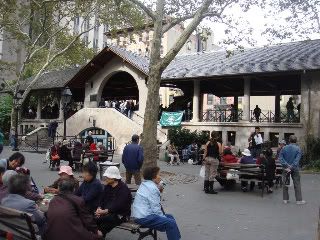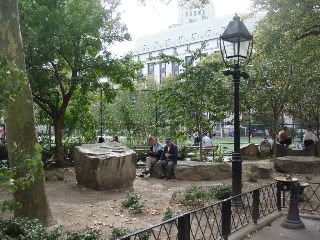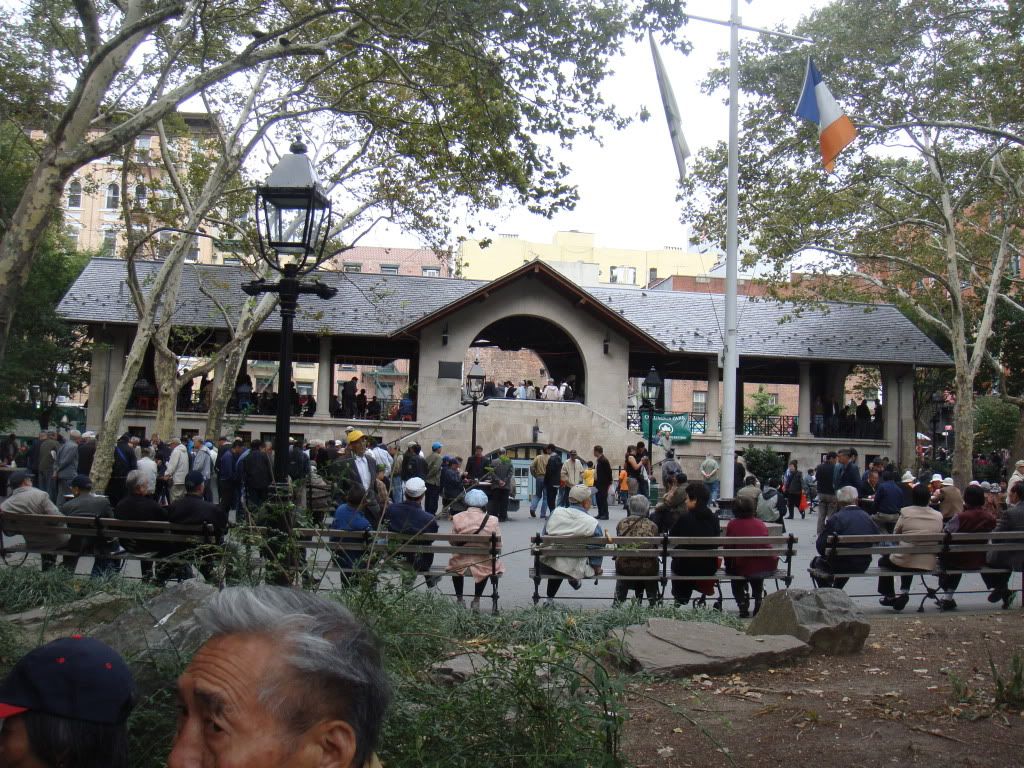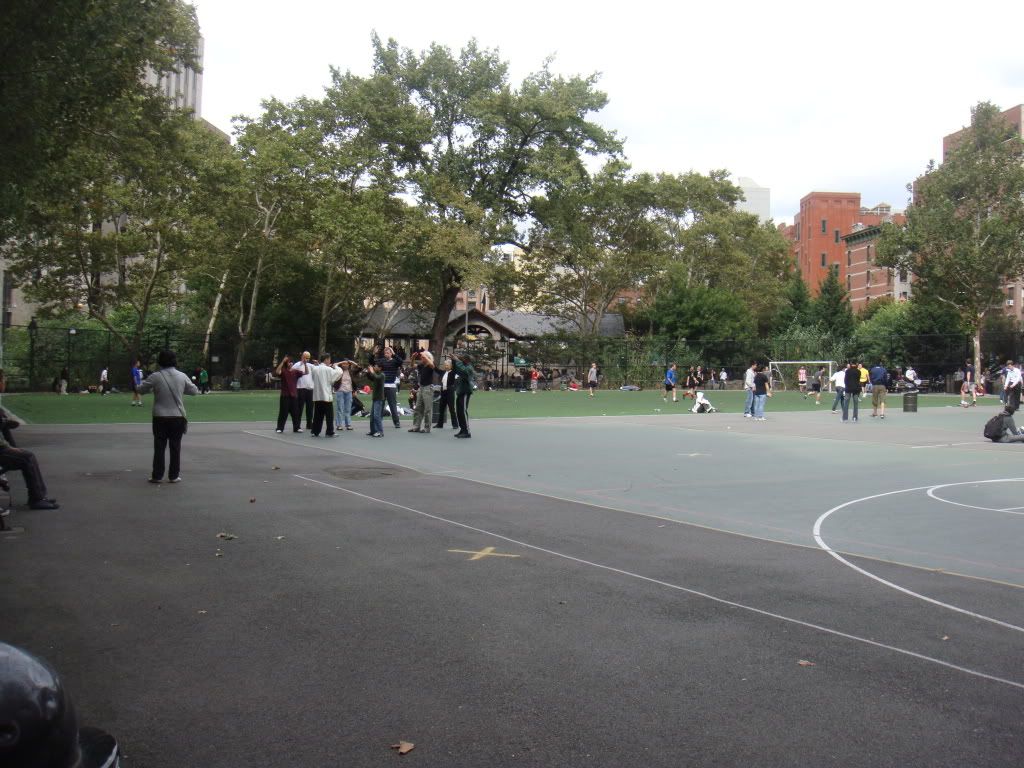Columbus Park
概览
"Columbus Park was named in 1911 after Christopher Columbus (1451-1506), the Italian explorer credited with discovering America, or at least with awakening Europe to the opportunities there. Bounded by Baxter (formerly Orange), Worth (formerly Anthony), Bayard, and Mulberry Streets, the site has alternatively been named Mulberry Bend Park, Five Points Park, and Paradise Park. Columbus Park is situated in the heart of one of the oldest residential areas in Manhattan, adjacent to the infamous "Five Points" and "The Bend”.
Until 1808 the site for the park was a swampy area near the Collect Pond (now Foley Square) and hosted a set of tanneries. In 1808 the pond was filled and became Pearl Street. When the filling began to sink, a foul odor emerged which depressed the living conditions of that neighborhood. As a consequence, the area became host to one of the world's most notorious tenements, known for its wretched living conditions and rampant crime, earning such names as "murderer's alley" and "den of thieves."
In 1842, on a visit to the United States, English author Charles Dickens made sure to visit the notorious Five Points, and he wrote about it in his American Notes in the most scathing terms. He described it as "reeking everywhere with dirt and filth," concluding that "all that is loathsome, drooping and decayed is here." But it was in the 1890’s, when plans for the construction of a park were already underway, that the area's notoriety achieved new heights. Danish newspaperman Jacob Riis devoted an entire chapter of his epic How the Other Half Lives to "The Bend," detailing the "foul core of New York's slums." He likened the filth and dearth of sunlight to a "vast human pig-sty," claiming that "There is but one 'Bend' in the world, and that is enough."
Despite its dangerous and difficult conditions, Five Points mixed the residential, commercial, and industrial elements in an unprecedented fashion, bringing together a wide array of immigrants. In the 1840’s, Baxter Street became host to German Jews and New York's first garment district. Meanwhile, the neighborhood quickly grew to become the largest Irish community outside of Dublin itself. In the 1880s, the Italians began to arrive, populating an adjacent neighborhood that remains to this day.
Immigrants used Five Points as a stepping stone to a better life in a new land and, nowadays, one can view the area not as a wretched slum but as a microcosm of the young city’s burgeoning and complex demographic. As Walt Whitman wrote in 1842, (the same year that Charles Dickens wrote his American Notes), the inner-city residents are "not paupers and criminals, but the Republic's most needed asset, the wealth of stout poor men who will work."
In the 20th century, the area around Five Points was subsumed by a sprawling Chinatown, with the latest generation of immigrants beginning to create a new life afresh in Manhattan's historic downtown. The residents of the area around Five Points have always served as a paragon of hard work and the drive to succeed.
Mulberry Bend Park was planned in the 1880’s by Calvert Vaux, co-designer of Central Park. Vaux saw this park as an opportunity to bring new life and order into the depressed neighborhood. Riis remarked of Vaux’s newly designed park that it is "little less than a revolution" to see the slum housing replaced by trees and grass and flowers, and its dark hovels infused with light and sunshine and air. The park opened in the summer of 1897, with bench-lined curved walkways and an expansive, open grassy area.
Columbus Park is one of the city's first major urban parks, and was home to such events as "Interpark Playground Basket Ball," then played by youth segregated by weight class, as described by the Park Commission in 1913. Throughout its life, the dynamic park has undergone many changes and much reconstruction. In 1934 a limestone recreation center was erected, which is now a comfort station. In the 1980s the construction of new playground equipment and the addition of basketball courts were completed. In 1999 two new pieces of play equipment were installed, as well as new paving and safety surfacing. A medley of planting has been done regularly throughout the life of the park. The area continues to be a gathering place for people of different cultures and ages, and hosts a wide variety of events and assemblies. " (New York City Department of Parks and Recreation)
Location:
评论
Connections
- New York, NY
- New York, NY
- New York, NY
- New York, NY
-
- New York, NY
- New York, NY
- New York, NY
- New York, NY
- New York, NY
- Ellicott City美国
- New York美国
- 美国
- Dubuque美国
- Darmstadt德国
- 美国
-
- San Francisco美国
- Cedar Island美国
- 美国
- 罗马尼亚
- New York美国
- Buxton美国
- 美国
- Jackson Heights美国
-
- 美国
- 巴西
- New York美国
- College Park, MD美国
- New York美国
- Saint Louis美国
- King加拿大
- 인천韩国
- 巴西
Multimedia
Columbus Park
Impacts
No impacts have been left for this site yet - be the first!




 added by
added by 





